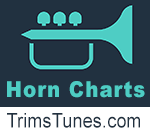Dan has played jazz with some of the best in the business. He played lead alto in the famed One O’Clock Band from the University of North Texas and later became a member of the Toshiko Akiyoshi-Lew Tabackin big band. He also can be heard soloing on jazz albums by Quincy Jones and Sammy Nestico. Pop/contemporary artists such as Babyface, Clint Black, Christina Aguilera, Stevie Wonder, Natalie Cole and Earth, Wind and Fire have all featured Dan’s great sound on their recordings.
His talent, strong work ethic, attitude and desire to become “over-qualified” have helped carve out – not a piece – but a chunk of the proverbial pie for himself.
“I work mostly every day. Sometimes I’ll do two or three different jobs in a day. It’s not uncommon to do 12 sessions in a week or it could be only four. It could be a jingle, an episode of The Simpsons or a TV date. Mixed in there could be a couple days for a movie. I work a lot with Jerry Hey. Over the course of a month it could be three or four record dates with Jerry. A live TV special like the Academy Awards or the Emmys might take up four or five days straight. There’s a lot of rehearsal for those type of dates.”
I recently had the pleasure of “chatting” with Dan Higgins for nearly two hours. Despite his long list of accomplishments he hasn’t an ounce of pretense. He is a man of strong conviction and a sense of duty – to the saxophone. Dan is a wonderful jazz musician who acts and speaks in a relaxed manner, yet he often uses words like “serious” and “responsibility.” Clearly, he has a lot to say – both on his mind and on his saxophone!
While talking for this interview, we touched on only a few of the aspects of Dan Higgins’ professional career. It serves as a window to an intense person whose music every saxophone player should know.
You greeted me at the beginning of our conversation, “You’re the man.” The truth of the matter is that Dan Higgins is the man! In all seriousness, you have a very long, enviable list of credits in the television, motion picture and recording business. Was this by design? Was this what you had your eyes set on when you were younger – to be a first call studio musician in LA?
No. I didn’t really know what that was. When I started on the clarinet, I just enjoyed playing it and went on to study at the University of Wisconsin. I played some saxophone but I had never studied it seriously.
I first came across your playing on the Steve Houghton and Tom Warrington Essential Styles book and CD. That may be the first place I heard you and knew who you were. There was a period of time where I was trying to learn more about playing drums and within a rhythm section. Ultimately, I think it made me more in tune with the rhythm section as a saxophone player
Oh, it’s so great to play a rhythm instrument. I play guitar. You know, we all play piano. My son took up guitar and I realized that I couldn’t help him. I couldn’t show him where a G13b9 was, so I went with him and took lessons. Now I can work out things to show him. He’s certainly better than I am because he DOES it. I’m just trying to get it going. I’m looking right at our drum set I have for my other son. They both play great drums. It's just natural for them as young kids.
Where did you grow up as kid?
I was born in Boston, Arlington actually. My dad was a college professor. He taught history at Tufts (University), Au Claire and then he taught at Long Beach State. I went to junior high and high school in Long Beach here in L.A.
….YOU CAN READ THIS COMPLETE INTERVIEW IN NOV/DEC 2004 ISSUE OF SAXOPHONE JOURNAL. Contact dornpub.com for subscription information.
Used by permission.
© 2004 by Dorn Publications, Inc.
Nov/Dec 2004, Volume 29, No. 2






